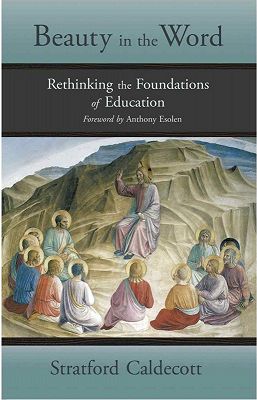
New opportunities for school reform and the creation of new schools encourage radical thinking about education. We need a philosophy that can guide us as we found these new schools, or enrich and improve existing schools, or attempt to design a curriculum for teaching our children at home.
The curriculum has become fragmented and incoherent because we have lost any sense of how all knowledge fits together. What kind of education would enable a child to progress in the rational understanding of the world without losing a sense of the whole, or a sense of the sacred? We must make an effort to overcome in ourselves false ideas inculcated by the education that we ourselves received, before we can understand the elements that would make a better education possible for our children.
Anthony Esolen describes the book's purpose as laying the foundations of "an education that penetrates the heart and the mind with light." The Trivium represents the first or foundational stage of the liberal arts, understood broadly as an education for freedom. It gives us grounding for greater freedom and responsibility in three ways; that is, by developing our ability to imagine, think, and communicate. The child needs to grow in these three dimensions to be fully integrated with society. If any of the three are lacking he or she will be cut off from society and become an isolated and rather lonely particle, frenetic or depressed; one lost fragment of a broken puzzle.
In educational wisdom, the traditional "arts of language" (Grammar, Dialectics, and Rhetoric) have a key role to play. To discover this role, we need to penetrate into the deeper meaning of the "three ways" (trivium = "place where three roads meet"). As Anthony Esolen says, these reflect the three primary axes of Being: "of knowing, that is to say giving; of being known, that is to say receiving; and of the loving gift." I have referred to them under the headings of Remembering, Thinking, and Speaking, corresponding to Mythos, Logos, and Ethos. John Paul II described "the incandescent centre" of all educational activity as "co-operating in the discovery of the true image which God’s love has impressed indelibly upon every person, and which is preserved in the mystery of his own love." The whole educational process comes reaches its consummation in the liturgical act, the act of worship.
This all sounds very theoretical, no doubt – and so it is, in the original sense of theoriaas "contemplation". But I have tried to show that it can be eminently practical as well, by showing how these ideas can be used to construct a curriculum. I refer in passing to the St Jerome Academy in Hyattsville, Maryland, whose "Educational Plan" (available online) has a very similar inspiration. Sequels to Beauty in the Word will include practical resources for parents and teachers, and we are looking for collaborators and advisers to join our working group in the coming months.
James V. Schall SJ: "Everyone recognizes the centrality of education, of introducing what is known to the one capable of knowing. What is often lacking is some sense of the whole, of some orderly way to think about the whole. It is not that we do not have a tradition that looks after the basic things and their order. It is that we have replaced what we need to know with a methodology that is based on a narrow concept of what constitutes knowing. In this insightful book, Stratford Caldecott has presented a way to understand education in a sense that includes philosophy, theology, the arts, literature, the studies of beauty and truth and what is good. It is a rare book that understands the unity of knowledge and what we want to know. This is one of those rare books."
Aidan Nichols OP: “Beauty in the Word is the fruit of a lifetime's thinking about the relation between faith and life by a cultural entrepreneur who is also a parent and knows what, educationally, can actually work. Most Catholic education has been confined not only externally, by State regulation, but also internally, owing to an inadequate philosophy of the human being in the full (and I mean full!) range of his or her capacities and needs. Now that successive governments in the UK have freed up the institutional constraints, those responsible for new initiatives in Catholic schooling have a chance to recreate the inner spirit of education and not just its outer frame. They will not easily find a programme more inspirational than the one presented here.”
“Stratford Caldecott’s words about beauty are themselves beautiful, and also wise; learned and also arresting. He offers a rare combination of intelligence and profound vision, yet combines this with accessibility and luminous transparency.”—Catherine Pickstock, University of Cambridge
“C.S. Lewis envisioned modern education as the irrigation of deserts. Caldecott here brings nourishing water to the cry of the modern imagination: ‘I thirst’. Drink deeply, from a book brim-full with the living water capable of transforming our educational practices.”—Cyrus P. Olsen III, University of Scranton
